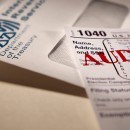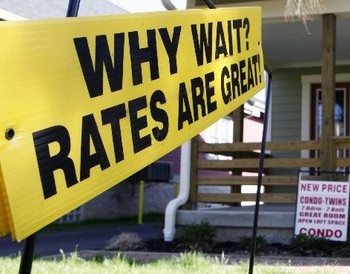 With the United States officially reaching its debt ceiling limit of $16.4 trillion, Congress has been working to allow the Treasury Department to borrow new money until mid-May. This essentially would suspend the debt ceiling limit for a few months with the hope that a new plan could be put in place.
With the United States officially reaching its debt ceiling limit of $16.4 trillion, Congress has been working to allow the Treasury Department to borrow new money until mid-May. This essentially would suspend the debt ceiling limit for a few months with the hope that a new plan could be put in place.
Unfortunately, most Americans do not have the luxury of piling on more debt. Many are unsure of what their own debt ceiling should be and the best way to free themselves from the burden of heavy borrowing.
While having no debt would be ideal, it is unavoidable for many especially when purchasing a home, automobile or paying for college. However, having a debt strategy can help minimize the long-term effects of financing costs, late fees or blemishes on your credit rating.
Acknowledge problem
The first step to reducing debt is to acknowledge that a debt problem exists. Getting out from under debt is no easy task and no quick tips are going to turn things around instantaneously. The cornerstone of any debt reduction strategy is having the discipline to make the drastic changes that may be necessary to improve your financial position.
Budget
Establishing, analyzing and monitoring your budget is critical to reducing debt. If you want to work your way out of debt, you need to avoid incurring any new debt. In order to do that, you need to balance your budget or make sure that you’re not spending more than you are bringing in. With the average American holding more than $7,194 in debt, this seemingly obvious concept bears repeating. Consider using mint.com and other online budgeting calculators to create and monitor your budget each month while also reducing expenses.
True cost of debt
One of the biggest eye-openers is understanding the true cost of your purchases when paying with debt. For example, let’s assume you charged $800 to a credit card for that new flat screen television. If the credit card company charges 14.99 percent interest and you make minimum payments, it could take nearly seven years and $316 in interest costs to pay off. Would you have chosen to purchase that same TV if you had to pay 39 percent more at the point of purchase? Probably not. Remember, when you buy with credit and carry high interest balances for long periods of time, you are just overcharging yourself.
Begin switching to cash
After reviewing your budget and making tough choices to reduce your spending, consider a switch to cash. If you want to eliminate debt, stop using debt altogether. Credit cards make spending more than you can afford too easy and too convenient. Paying with good old-fashioned cash helps you to understand the true cost of your spending and may help prevent you from spending funds you do not have.
Consolidate debt
Consolidating your debt through low-cost and low-interest balance transfers can help speed up the process of paying of your debt. Consider visiting bankrate.com to research low-interest offers from multiple credit card companies. Remember, one of the benefits of our current low interest rate environment is that you can restructure your debt and save money. Transferring high interest cards to a 0 percent offer could significantly reduce your financing costs.
Remember, carefully monitor your rates as many credit companies offer introductory terms that will increase later on. Also be careful of excessive balance transfer fees.
Finally, consider negotiating with your current credit card companies to obtain lower rates. Almost everything is negotiable, including your credit cards. Making the switch to lower interest cards can shorten the time required to pay off your debts. Consider visiting federalreserve.gov to calculate the benefits of paying off your debt quickly.
Pretend your raise never happened
As our economy begins to stabilize and improve, more and more workers may begin to see increases in compensation. If you are fortunate enough to receive a raise, consider pretending it never happened.
Instead, continue to live on your pre-raise income and pay off your debt with the additional funds. While this takes extreme discipline, if you can pull it off over a few years you could really make a significant dent in your debt.
The bottom line is you can’t solve your debt problem with more debt.
The process of breaking the stranglehold of debt may require drastic changes to the way you spend and save. Implementing the strategies noted may help you to begin the new year with an effective debt reduction plan.
Since everyone’s situation is unique, consider speaking to your adviser to determine the most appropriate strategy for you.
Kurt J. Rossi, MBA, is a certified financial planner practitioner. He can be reached for questions at (732) 280-7550 or kurt.rossi@Independentwm.com. LPL Financial Member FINRA/SIPC.








